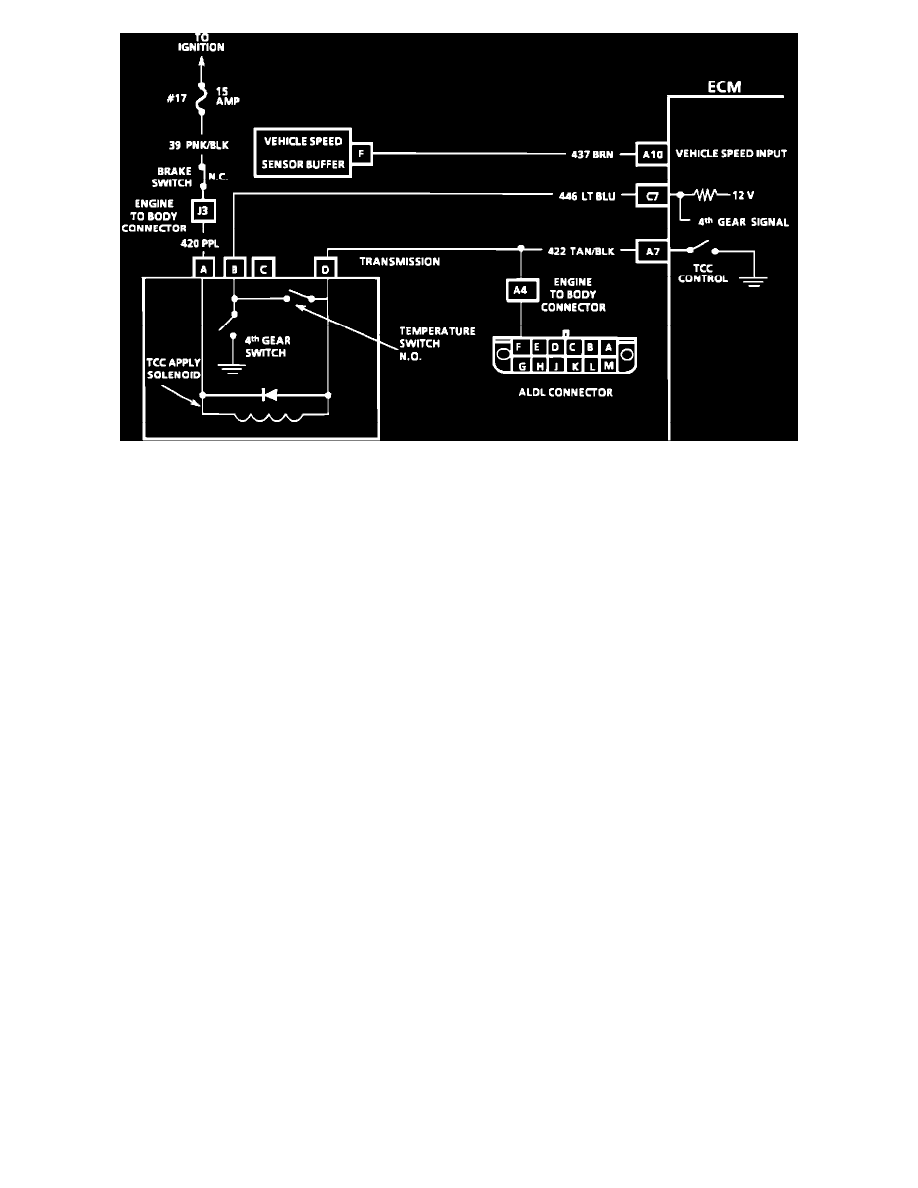Caprice RWD V8-305 5.0L (1992)

Wiring Diagram For TCC
CIRCUIT DESCRIPTION:
The purpose of the automatic transmission Torque Converter Clutch (TCC) feature is to eliminate the power loss of the torque converter when the
vehicle is in a cruise mode. This allows the convenience of the automatic transmission and the fuel economy of a manual transmission. Fused ignition
voltage is supplied to the TCC solenoid through the brake switch. The ECM will engage the TCC by grounding circuit 422 to energize the solenoid.
The TCC will engage when the following conditions exist:
^
Vehicle speed above 36 mph (58 km/h).
^
Engine at normal operating temperature above 85°C (185°F).
^
Throttle position sensor output is not changing, indicating a steady road speed.
^
Brake switch closed.
TEST DESCRIPTION: The numbers below refer to circled numbers on the diagnostic chart.
1.
Confirms 12 volt supply, as well as continuity of TCC circuit.
2.
Grounding the diagnostic terminal with the engine "OFF" should allow the ECM to energize the TCC solenoid. This checks the capability of the
ECM to control the solenoid.
3.
The TCC coil resistance must measure more than 20 ohms. Resistance less than 20 ohms may cause early failure to the ECM "driver." Using an
ohmmeter, check the solenoid coil resistance of all ECM controlled solenoids and relays before installing a replacement ECM. Replace any
solenoid or relay that measures less than 20 ohms.
DIAGNOSTIC AIDS:
^
An engine coolant thermostat which is stuck open or opens at a low temperature may result in an inoperative TCC.
2 of 2
